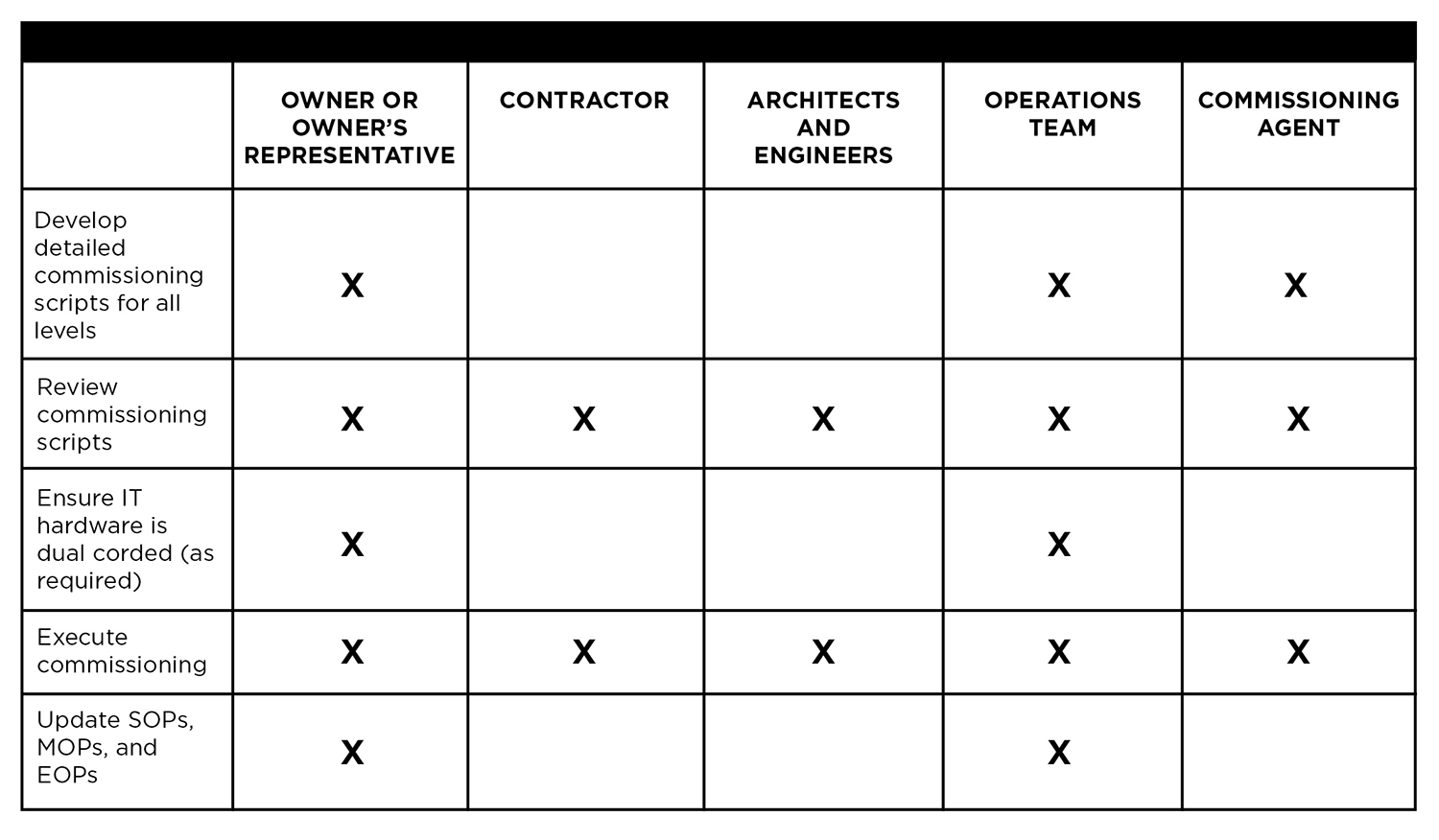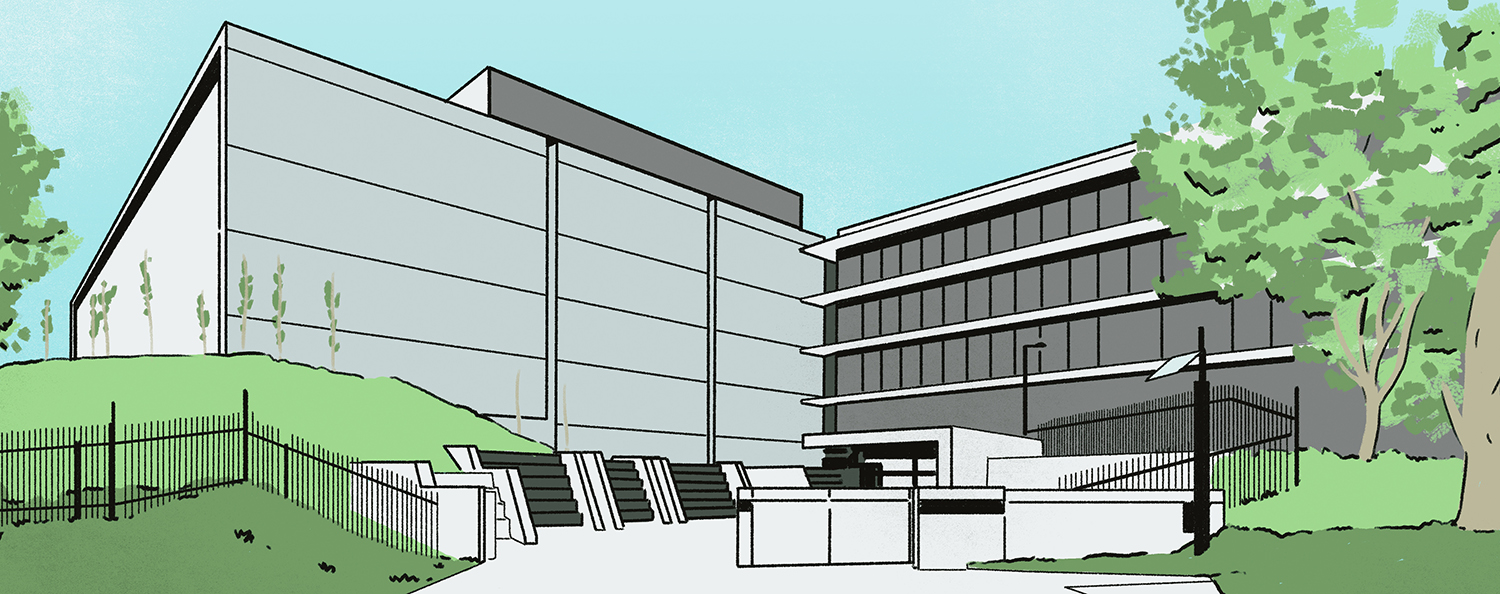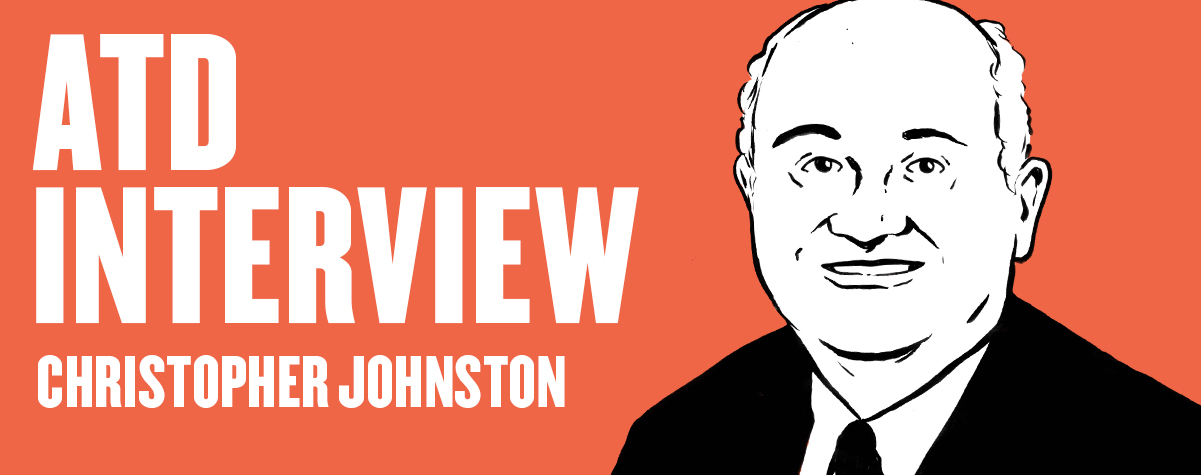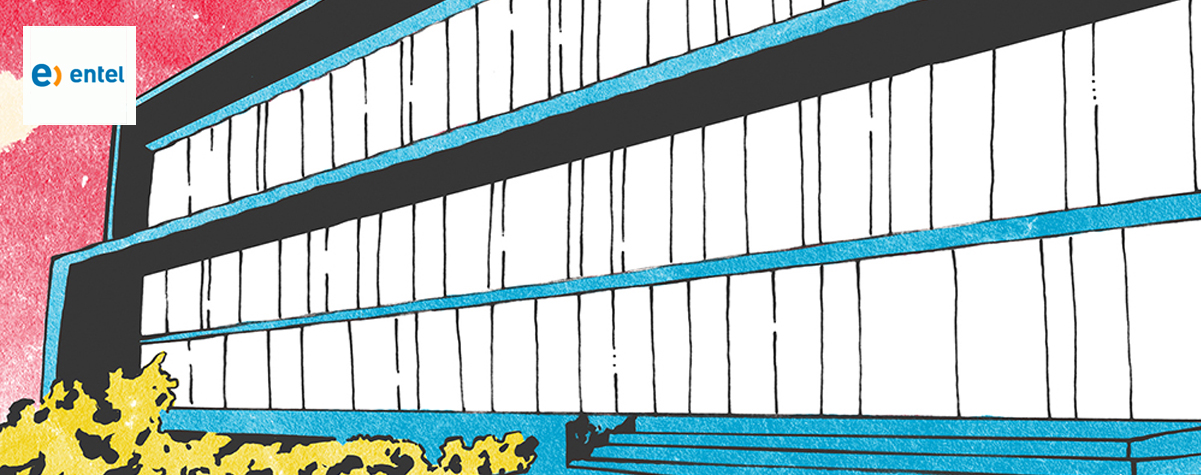Improve Project Success Through Mission Critical Commissioning
Rigorous testing of data center components should be a continuous process
By Ryan Orr, with Chris Brown and Ed Rafter
Many data center owners and others commonly believe that commissioning takes place only in the last few days before the facility enters into operation. In reality, data center commissioning is a continuous process that, when executed properly, helps ensure that the systems will meet mission critical objectives, design intent, and contract documents. The commissioning process should begin at project inception and continue through the life of the data center.
Uptime Institute’s extensive global field experience reveals that many of the problems, and subsequent consequences, observed in operational facilities could have been identified and remediated during a thorough commissioning process. Rigorous, comprehensive commissioning reduces initial failure rates, ensures that the data center functions as designed, and verifies facility operations capabilities—setting up Operations for success. At the outset of the commissioning program development, the owner and commissioning agent (CxA) should identify the important elements and benchmarks for each phase of the data center life cycle. Each element and benchmark must be executed successfully during commissioning to ensure the data center is rigorously examined prior to operations.
Uptime Institute wants to highlight the importance and benefits of commissioning for data center owners and operators and clarify the goals, objectives, and process of commissioning a data center.
This publication:
• Defines and reinforces the basic concepts of the five levels of commissioning
• Relates the levels of commissioning to the data center life cycle
• Presents technical considerations for commissioning activities associated witheach phase
• Details the overall management of a commissioning program
• Identifies minimal roles and responsibilities for each stakeholder throughout the commissioning process
Commissioning tests some of the most important operations a data center will perform over its life and helps ease the transition between site development and daily operations. Commissioning:
• Verifies that the equipment and systems operate as designed by the Engineer-of-Record
• Provides a baseline for how the facility should perform throughout the rest of its life
• Affords the best opportunity for Operations to become familiar with how systems operate and test and verify operational procedures without risking critical IT loads
• Determines the performance limits of a data center—the most overlooked benefit of commissioning
In other words, commissioning highlights what a system can do and how it will respond beyond the original requirements and design features if the process is executed to a high degree of quality. Commissioning, like data center operations, must be considered throughout the full life cycle of the data center (see Start with the End in Mind, The Uptime Institute Journal Vol. 3 p. 104). Commissioning should first be considered, and planned for, at a project’s inception and continue throughout the design, construction, transition-to-operations, and ongoing operations where re-commissioning is appropriate.
COMMISSIONING LEVELS
Over time, various organizations have defined the levels of commissioning. As a result, a data center owner may encounter a number of variations when attempting to understand and implement a commissioning program. With this publication, Uptime Institute clarifies the purpose of each level. However, each and every data center project is unique, which could mean that one or more of these activities might fit better within a different level of commissioning for some projects. Table 1 is organized to outline the process and sequence for commissioning, but the most important thing is that all the activities are completed. The high reliability essential to mission critical facilities requires that a rigorous and complete commissioning program includes all five levels to ensure that capital investments are not wasted.
COMMISSIONING AND UPTIME INSTITUTE TIERS
Unlike Uptime Institute’s Operational Sustainability Standard, the rigor associated with commissioning a data center has little relationship to its Tier level. The scope for commissioning and testing a Tier I data center may be less than that of a Tier IV data center—based on differences in the actual design complexity, topology, size, components, and sequence of operations. However, the roles and responsibilities and technical requirements for the commissioning team should not differ largely between Tiers and should be just as rigorous and comprehensive for a Tier I as it would be for a Tier IV.
COMMISSIONING STAKEHOLDERS
The most critical stakeholders involved on any project are listed below. They should fulfill their major roles sequentially. Stakeholders with additional expertise or valuable contributions should also participate. The CxA should ensure that the roles and responsibilities of the commissioning stakeholders are balanced and well documented.
Owner: The owner should initiate the commissioning process at the project outset, including identifying key stakeholders to take part in the program and communicating expectations for the commissioning program. Owner’s personnel are typically responsible for internal engineering, project management, and administration; however, the IT end user may also be part of the owner’s team. When the owner’s personnel lack the necessary experience for these activities, those responsibilities should be delegated to an authorized third-party representative, typically referred to as an owner’s representative. If the owner does not participate (or appoint a representative), no one on the commissioning team will have the knowledge or perspective to represent the owner’s interests. The end result could be a sub-standard facility, unnecessarily vulnerable to outages and unable to support the business needs.
Contractor: The commissioning team always includes the general contractor and specialty trade contractors, including mechanical, electrical, and controls, as well as OEM vendors who will be bringing equipment on site and assisting with testing. Without contractors, commissioning activities will be nearly impossible to complete properly. Contractors often coordinate vendors and physically operate equipment during commissioning procedures. Uptime Institute experience indicates that although contractors are rarely excluded entirely from commissioning their input is sometimes undervalued.
Architect and engineers: The Engineers-of-Record are legally responsible for the design of the data center, including those responsible for mechanical and electrical systems. Design intent may be compromised if designers do not participate in commissioning. The design engineer specifies the sequence of operations and is the only party who can confirm that the intent of the design was met.
Operations: The maintenance and operations managers, supervisors, and technicians are ultimately responsible for the day-to-day operations of the data center and its maintenance activities. This group may include owner’s personnelor a third party contracted for ongoing operations. Excluding Operations is a huge missed opportunity for training and compromises the team’s ability to verify maintenance and operations procedures (SOPs, EOPs, MOPs, etc.). Without live training during commissioning to verify effective procedures, the operations team will not be fully ready for maintenance or failures when the facility is in operation.
CxA: Ideally a third party is the responsible authority for the planning and execution of the entire commissioning process. The CxA may be an owner’s representative or a qualified mechanical or electrical contractor. Trying to commission without a CxA could result in poorly planned, undocumented, and unscripted commissioning activities. Additionally, it makes it more difficult to close out construction and properly transition to operations, which includes proper punch-list item closeout and execution of training for operations staff.
PRE-DESIGN PHASE ELEMENTS AND BENCHMARKS
Pre-design phase commissioning immediately follows the approval of a data center project and begins with selection of the CxA through a request for proposal (RFP) process (see Table 2). During the pre-design phase the owner, Engineers-of-Record, operations staff, and the CxA identify the owner’s project requirements (OPR) for the data center. Table 2 lists each participant in data center design, construction, and commissioning and denotes responsibility for particular tasks. In some projects, the owner may elect to utilize an owner’s representative to manage the day-to-day activities of the project on their behalf.
At this time, the owner should hire the data center facility manager and one data center facility supervisor to support the commissioning activities as representation for the operations team. It is not necessary to build the entire operations team to support the commissioning and construction activities.
PRE-DESIGN PHASE COMMISSIONING TECHNICAL REQUIREMENTS
Tasks to complete during the pre-design phase include developing a project schedule that includes commissioning, creating a budget, outlining a commissioning plan, and documenting the OPR and basis of design (BOD).
Technical requirements during this phase include:
CxA Selection
Selecting the CxA in the Pre-Design phase allows it to help develop the OPR and BOD, the commissioning program, the budget, and schedule.
The CxA should have and provide:
• Appropriate staff to support the technical requirements of the project
• Experience with mission critical/data center facility commissioning
• Experience with the project’s known topologies and technologies
• Sample commissioning documents (e.g., Commissioning Plan, Method Statements, Commissioning Scripts, System Manual)
• Commissioning certifications
• Client referrals
The CxA should be:
• Contracted directly to the owner to ensure the owner’s interests are held primary
• Optimally aligned to both the owner’s operations team and the owner’s design and construction team to further align interests and gain efficiencies in coordinating activities throughout commissioning
• An independent third party
Ideally, the CxA should not be an employee of the construction contractors or architect/engineering firms. When a third-party CxA is not a viable choice, the best alternative would be a representative from the owner’s team when the technical expertise is available within the company. When the owner’s team does not have the technical expertise required, a third-party mechanical or electrical contractor with commissioning experience could be utilized. Of course, cost is a factor in selecting a CxA, but it should not be allowed to compromise quality and rigor.
Project Schedule
• Must include all commissioning activity time on the schedule to avoid project delays.
• Should allot sufficient time for correcting installation and performance deficiencies revealed during commissioning.
• Should assess the requirement and/or capability for post-occupancy commissioning activities. This can include provisions for seasonal commissioning to assess the performance of critical components in a variety of ambient conditions.
At this point, the schedule should have significant flexibility and can be better defined at each phase. Depending on the size, complexity, and sequence of operations associated with a facility, a rigorous Level 5 commissioning schedule could take up to 20 working days or longer. Even for small and relatively basic data centers, commissioning teams will find it challenging to complete Level 5 commissioning with a high level of detail and rigor in less than a few days.
Commissioning Budget
• Should include a large contingency reserve for Level 4 and Level 5 commissioning budgets
• Should include all items and personnel required to support complete commissioning
At this point in the process there are a considerable number of unknowns in the design, construction, and commissioning requirements. Budgets for Level 4 and Level 5 commissioning should include a large contingency reserve to accommodate the unknown parameters of the project. This contingency reserve can be reduced as appropriate as the project moves along and more and more items are defined. However, the final budget should still have a contingency reserve to account for unforeseeable issues, such as additional load bank rental time in the event commissioning takes longer than scheduled. Budgets need to include all items and personnel required to support commissioning. This includes, but is not limited to, load banks, calibrated measurement devices, data loggers, technician support, engineering support, and consumables such as fuel for engine-generator sets.
OPR and BOD
American Society of Heating, Refrigerating and Air-Conditioning Engineers, Inc. (ASHRAE) Standard 202 defines an OPR as “a written document that details the requirements of a project and the expectations of how it will be used and operated. This includes project goals, measurable performance criteria, cost considerations, benchmarks, success criteria, and supporting information. (The term Project Intent or Design Intent is used by some owners for their Commissioning Process Owner’s Project Requirements.)”
ASHRAE Standard 202 defines a BOD as “a document that records the concepts, calculations, decisions, and product selections used to meet the OPR and to satisfy applicable regulatory requirements, standards, and guidelines. This includes both narrative descriptions and lists of individual items that support the design process.”
The OPR and BOD are generated by the project owner and communicate important expectations for the data center project. These documents should be revised and updated at the end of each phase in the construction process. Specific to data center commissioning, the OPR and BOD should:
• Comply with ASHRAE Standard 202, or similar
• Specify that the CxA is responsible for all commissioning, testing, and formal reporting
• Identify whether the intent of the data center design is to be scalable with IT requirements and whether the use of shared infrastructure is allowed and note any subsequent design features necessary to commissioning
The decision as to whether or not the design intent is to be scalable or use shared infrastructure will have a large effect on subsequent implementation and commissioning phases. Shared infrastructure systems in an incremental buildout can potentially increase the risk associated with future commissioning phases. Careful planning can mitigate this risk. Where shared infrastructure is to be used in a phased implementation, the OPR or BOD should highlight the importance of including design features that will allow a full and rigorous commissioning process at each phase of project implementation.
DESIGN AND PRE-CONSTRUCTION PHASE ELEMENTS AND BENCHMARKS
The design and pre-construction phases are commonly blended into a design/build format in which some activities are completed concurrently (see Table 3). The design typically goes through multiple iterations between the Engineer-of-Record and owner; each iteration identifies additional data center design details. Since the Engineer-of-Record is responsible for creating the designs and ensuring their concurrence with applicable commissioning documents, it becomes the responsibility of the other stakeholders to verify compliance. The CxA and contractor should review the design throughout this process, provide feedback based on their experience, and ensure compliance with the OPR document.
DESIGN AND PRE-CONSTRUCTION PHASE COMMISSIONING TECHNICAL REQUIREMENTS
Commissioning Plan
The commissioning plan is the heart of the commissioning program for a data center. While the CxA will take the lead in its development, all other stakeholders should review and participate in the approval of the final commissioning plan. Utilizing each unique skillset in developing and reviewing the commissioning program will help ensure a rigorous commissioning program.
Once appointed, the CxA must develop the overall commissioning plan, which generally includes:
• Scope of commissioning activities, including identification of any re-commissioning requirements
• General schedule of commissioning
• Documentation requirements
• Risk identification and mitigation plans
• Required resources (e.g., tools, personnel, equipment)
• Identification of the means and methods for testing
Design Review
• For concurrence with the OPR and planned operations
• For commissioning readiness
At this phase, appropriate stakeholders should develop plans, checklists, and reports for Level 1, Level 2, and Level 3. All stakeholders must review these documents. Additional technical requirements during this phase include:
• Review project schedule and budget to ensure the schedule continues to maintain adequate resources and time to complete commissioning
• Verify adherence to OPR and BOD
• Amend documents as necessary in order to keep them up to date
• Add design elements as required to allow for the commissioning program to meet the minimum OPR and meet commissioning readiness requirements
• If the design is scalable and to be implemented in future phases with shared systems, ensure that the design allows for future commissioning by including enhancements to reduce the risk to the active IT equipment.
• Ensure that equipment specifications identify that the specified capacity is net of any deductions or tolerances allowed by national or international manufacturing standards (verified during Level 1 and Level 3)
Typically, long-lead items are procured using an RFP process in parallel with the design process. The commissioning requirements for this equipment should be included in the RFP documents and adherence to these should be assessed throughout the equipment delivery and installation. As part of these requirements, RFPs should identify the requirement for on-site OEM technician support throughout Level 4 and Level 5.
Commissioning Plans and Scripts for Level 1, Level 2, and Level 3
• OEMs should provide the written test procedure to the commissioning team for approval prior to the Level 1 activities.
• Contractors, in conjunction with the CxA, should provide Level 2 Post-Installation checklists from the record drawings to verify installation of all equipment.
• The entire commissioning team should review all Level 2 checklists.
• OEMs, in conjunction with the CxA, should provide start-up and functional checklists for Level 3.
• Where component-level functional testing is necessary beyond the OEM’s typical scope of work, the
CxA shall create testing procedures that should be reviewed by the commissioning team and executed by
the contractors.
CONSTRUCTION PHASE ELEMENTS AND BENCHMARKS
Throughout the data center construction, the CxA will monitor progress to ensure that the installations conform to the OPR document. Additionally, the first three levels of commissioning will take place and be overseen by the CxA (see Table 4).
CONSTRUCTION PHASE COMMISSIONING TECHNICAL REQUIREMENTS
During the construction phase, the focus moves from developing plans to execution, with team members executing Level 1, Level 2, and Level 3 activities. At the same time, the operations team and the CxA develop scripts for Level 4 and Level 5, which are to be reviewed by all stakeholders.
Technical requirements during this phase include:
• Review project schedule and budget to ensure the schedule continues to have adequate time and budget to
complete commissioning
• Protect equipment stored on site awaiting installation from hazards (e.g., dirt and construction debris,
impact, fire hazards) and maintain according to manufacturer’s recommendations
• Verify that circuit breakers are set in accordance with the short circuit and breaker coordination and arc
flash study
• Repeat Level 1 procedures in the actual data center environment since factory witness testing is
performed in ideal conditions rarely seen in practice in the data center, ensuring that no equipment
damage occurred during transit and that the equipment performs at the same level as when it was tested
at the factory
• Ensure that the building management system (BMS) functions at a basic level so that it is ready to
support critical Level 4 and Level 5 commissioning activities
• Log critical asset information (e.g., make, model, serial number) into the maintenance management
system (MMS) (or other suitable recordkeeping) as equipment is received on site to be available for the
operations team
• Continue to submit formal reports to the owner detailing all items tested, steps taken to test, and the
results as soon as reasonably possible
• Repeat entire testing procedures when programming or control wiring is altered to correct a testing step
that does not complete successfully as it is possible to have an unexpected impact
In addition, Engineers-of-Record should provide a finalized sequence of operations document to the CxA, so it can create the Level 4 and Level 5 commissioning scripts.
Commissioning Plans and Scripts for Level 4 and Level 5
Script development is the responsibility of the CxA, with support from all other team members.
Plans and scripts should:
• Identify every test and step to be taken to complete commissioning
• Identify and describe the anticipated results for each step of the test
• Identify responsible parties for each step of each test to ensure that everyone is available and
prepared, and to assist with schedule and budget reviews
• Identify safety precautions and personal protection equipment (PPE) requirements for all team members
Testing should be conducted:
• Under expected normal operations in the same manner that the operations team will operate the
data center
• Under expected maintenance conditions in the same manner that the operations team will maintain
the data center
• In manual operation as necessary to support future upgrades and replacements
In addition, commissioning should simulate system and component failures to test fault tolerant features, even when fault tolerance may not be a specific design assumption because it will inform the operations team on how the infrastructure responds when failures inevitably occur. Uptime Institute recommends testing in as many additional scenarios as possible that make sense for the design—even scenarios that may be outside the scope of design—to provide key information to operations about how to respond when the facility does not function and/or respond as designed.
LEVEL 4 AND 5 COMMISSIONING PHASE ELEMENTS AND BENCHMARKS
Once construction of the data center has been substantially completed, the CxA will lead the team through Levels 4 and 5 commissioning. The purpose of these activities is to ensure that individual systems and the full data center ecosystem function as they were intended in the design and OPR documents. This includes verifying requiredcapacities and ensuring that equipment can be isolated as intended and that the data center responds as expected to faults (see Table 5).
While weather cannot be anticipated, it can and will have an impact on the final commissioning results. Results from Level 4 and 5 commissioning activities should be extrapolated to predict how the equipment would perform at the actual design extreme temperatures and conditions. However, commissioning activities should be scheduled seasonally to verify system operation for the actual extreme and varying ambient conditions for which it was designed—especially in the event economizers are utilized in the data center.
LEVEL 4 and 5 COMMISSIONING PHASE TECHNICAL REQUIREMENTS
Level 4 and 5 commissioning presents a unique opportunity to any data center, which is to be able to fully test and practice equipment operation in any building condition without any risk to critical IT load. Improvements in future operations can result when stakeholders take advantage of this opportunity.
All critical components and systems must be fully tested—representative testing should not be acceptable for mission critical data centers.
Level 4
• Level 4 must include load bank tests of the engine-generator sets, UPS, and UPS battery systems at design
and rated capacities.
• Minimum continuous runtime durations of not less than eight hours are recommended for all load bank
tests; however, continuous runtimes of up to 24 hours are considered a best practice.
• Ensure that load banks are distributed within critical areas to best simulate the actual IT environment
distribution, ideally physically located within racks and with forced cooling on a horizontal path, which
allows for more accurate and realistic mechanical system testing.
• Prior to commencing Level 5, building management and control system (BMCS) graphics should be
completed to support the commissioning activities and to help commission the BMCS because operations
staff will eventually rely on the BMCS including alarming and data trending features.
Level 5
• Ensure that commissioning team members and contractors are positioned strategically throughout the
data center to monitor all systems throughout Level 5
• Size load banks as small as reasonably possible for Level 5 activities to best simulate the
actual IT environment for more accurate and realistic mechanical system testing
• Perform Level 5 tests with the fire detection and suppression systems active, rather than in bypass to
ensure there is no adverse impact to the critical infrastructure
• Isolate equipment at the upstream circuit breaker when performing equipment isolations to simulate
maintenance activities rather than at the local disconnect physically located on the unit
• Complete evaluations when changes are made throughout Level 5 to fix deficiencies and determine
which, if any, tests must be repeated/redone
• Consider the need to retest more than once in order to ensure the successful test was not an anomaly
when an initial test is not successfully completed
• Complete testing on both utility power and on engine-generator power (or other alternative to utility
power source)
• When simulating faults, simulate multiple fault types across separate tests on each piece of equipment
• Ensure that sensor failures are included in the testing scope when simulating faults on highly automated
data centers that rely heavily upon field sensors
• Document, identify, and validate normal operating set points, alarms, and component settings
• Monitor alarms that are generated in the BMCS and electrical power monitoring system (EPMS) to
ensure that they are accurate and useful
• At a minimum, take electrical load and critical area temperature readings between each discrete test;
where data loggers are used, measurements should be logged every 30-60 seconds
• Test a variety of load conditions—25%, 50%, 75%, and 100% step loads—in order to simulate the actual
load conditions as a data center gradually increases its critical IT load
• Test (as possible without causing damage) emergency conditions—such as N-1 and no cooling with
design load—to provide the information necessary for the operations team to structure future
emergency operating practices and plan for staff appropriately
• Install aisle containment strategies that are to be utilized as part of the design to ensure the aisle
containment strategies support the infrastructure as required
Site Cleanup
• Replace the air filters for the electrical systems and heating, ventilation, and air conditioning (HVAC)
systems following the conclusion of Level 5 commissioning
• Flush and clean piping and ductwork to ensure construction debris does not impact future mechanical
plant performance
TURNOVER-TO-OPERATIONS PHASE ELEMENTS AND BENCHMARKS
The turnover-to-operations includes all activities associated with formally turning the facility over to the owner and Operations. Primarily, this includes completing the final documentation associated from the commissioning activities Levels 1-5 and utilizing the commissioning results to finalize SOPs, MOPs, and EOPs.
Needless to say, this is a critical juncture for the data center. Soon after Level 4 and 5, the facility will become live and support critical IT infrastructure, which begins the need to maintain the facility. At this time, Operations must take all of the lessons learned and knowledge gained from the construction and commissioning phases to finalize the maintenance and operations program. Operations must complete this work in a relatively short amount of time in order to minimize risk to the data center. The longer it takes to finalize all of the documentation and processes, the longer the facility will be at risk. Operations needs full support during this transition to ensure the overall uptime and success of the data center.
During the Turnover-to-Operations phase, the CxA duties can include:
• Ensuring that all post-Level 5 punchlist items are successfully completed and closed out
• Facilitating and/or coordinating infrastructure or OEM training to the operations staff
• Assisting as necessary the development of critical operating procedures.
The CxA is also responsible for gathering all testing reports and checklists from all five levels of commissioning to create the final commissioning report. The final report to the owner should include:
• Electrical and mechanical load and system condition readings taken at timely intervals before major
actions are implemented in each test
• All steps, results, and system readings at every stage of the commissioning
The CxA should return to the site approximately one year following completion of commissioning to review the building operations and to ensure there are no outstanding items related to re-commissioning or seasonal commissioning efforts.
RE-COMMISSIONING AND FUTURE INSTALLATION PHASE ELEMENTS AND BENCHMARKS
Commissioning should be performed any time new infrastructure is installed or any time there is a significant change to the configuration of existing infrastructure. This could include planned expansion of the data center or major replacements (see Table 6).
In data centers that are built to be scalable, it is imperative that commissioning be just as rigorous for the follow-on infrastructure deployments to minimize risk to the facility. Commissioning activities undoubtedly add risk to the data center, especially where infrastructure systems are shared. However, this risk must be weighed against the risk of performing the associated commissioning tests. If a component or system is not going to perform as expected, the owner must decide if it is better to have this occur during a planned commissioning activity or during an unplanned failure. While performing a rigorous commissioning program during the initial buildout may prove the concept of the design, the facility could potentially be at risk if all of the new infrastructure components and systems are not tested rigorously.
These types of commissioning activities, by their very nature, occur while the systems are supporting critical IT load. In these instances, the operations team best knows how these activities may impact that mission critical load. During re-commissioning or incremental commissioning, the operations team should be working in very close collaboration with the commissioning team to ensure the integrity of the data center. Additionally, if re-commissioning involves changes to the configuration of the data center, Operations needs full awareness so that operating procedures that impact maintenance and emergency activities can be updated and tested completely.
The best way to mitigate the risk of re-commissioning efforts or for follow-on phases is to ensure that the facility is properly and extensively commissioned when it is originally built. And, as part of a rigorous re-commissioning program, all of the points discussed in this paper for standard commissioning apply to the re-commissioning efforts. However, due to the higher level of risk with these activities, there are some additional requirements.
RE-COMMISSIONING AND FUTURE INSTALLATION PHASE TECHNICAL REQUIREMENTS
All of the technical requirements previously provided apply to re-commissioning and future installation phases. However, follow-up commissioning activities also require the following special considerations by the CxA:
• Adequate notice must be provided to service owners about the schedule, duration, risk, and
countermeasures in place for the re-commissioning activities in order to gain concurrence from IT
end users.
• For facilities that are based on a dual-corded IT equipment topology, the owner and Operations
should verify that the existing critical load is appropriately dual corded where systems that support
installed IT loads are to be commissioned.
• As load banks can introduce contaminates, load bank placement should be considered carefully so as not
to impact the existing critical IT equipment.
• Detailed commissioning scripts must be prepared and followed during commissioning to ensure minimal
risk to existing IT equipment. Priority should be given to the live production IT environment, and back-out
procedures should be in place to ensure an optimal mean time to recovery (MTTR) in case of a power
down event.
• Seasonal testing of the systems should be performed to verify performance in a variety of climatic
conditions, including extreme ambient conditions. This also ensures that economizers, where used, will
be tested properly.
CONCLUSION
Commissioning activities represent a unique opportunity for data center owners. The ability to rigorously test the capabilities of the critical infrastructure that support the data center without any risk to mission critical IT loads is an opportunity that should be capitalized on to the maximum possible extent. Uptime Institute observes that this critical opportunity is being wasted far too often in data center facilities, with not nearly enough emphasis on the rigor and depth of the commissioning program required for a mission critical facility until critical IT hardware is already connected.
A well-planned and executed commissioning program will help validate the capital investment in the facility to date. It will also put the operations team in a far better position to manage and operate the critical infrastructure for the rest of the data center’s useful life, and ultimately ensure that the facility realizes its full potential.
Ryan Orr joined Uptime Institute in 2012 and currently serves as a senior consultant. He performs Design and Constructed Facility Certifications, Operational Sustainability Certifications, and customized Design and Operations Consulting and Workshops. Mr. Orr’s work in critical facilities includes responsibilities ranging from project engineer on major upgrades for legacy enterprise data centers, space planning for the design and construction of multiple new data center builds, and data center Maintenance and Operations support.
Christopher Brown joined Uptime Institute in 2010 and currently serves as Vice President, Global Standards and is the Global Tier Authority. He manages the technical standards for which Uptime Institute delivers services and ensures the technical delivery staff is properly trained and prepared to deliver the services. Mr. Brown continues to actively participate in the technical services delivery including Tier Certifications, site infrastructure audits, and custom strategic-level consulting engagements.
Edward P. Rafter has been a consultant to Uptime Institute Professional Services (ComputerSite Engineering) since 1999 and assumed a full-time position with Uptime Institute in 2013 as principal of Education and Training. He currently serves as vice president-Technology. Mr. Rafter is responsible for the daily management and direction of the professional education staff to deliver all Uptime Institute training services. This includes managing the activities of the faculty/staff delivering the Accredited Tier Designer (ATD) and Accredited Tier Specialist (ATS) programs, and any other courses to be developed and delivered by Uptime Institute.


















